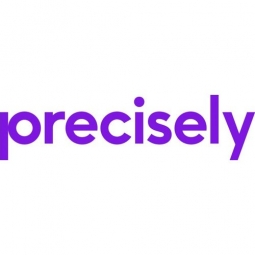IT Operational Efficiency Achieved with Ironstream Mainframe IT and Business IT Both Get Big-Data Benefits

Customer Company Size
Large Corporate
Region
- America
Country
- United States
Product
- Ironstream
- Splunk Enterprise
Tech Stack
- IT Operations Analytics (ITOA)
- SMF Data Processing
Implementation Scale
- Enterprise-wide Deployment
Impact Metrics
- Productivity Improvements
- Cost Savings
- Digital Expertise
Technology Category
- Analytics & Modeling - Real Time Analytics
- Application Infrastructure & Middleware - Data Exchange & Integration
Applicable Industries
- Finance & Insurance
Applicable Functions
- Business Operation
Use Cases
- Predictive Maintenance
- Process Control & Optimization
- Remote Asset Management
Services
- System Integration
- Data Science Services
About The Customer
The customer in this case study is a major insurance company that operates on a large scale, likely within the United States. As a large corporate entity, this company deals with vast amounts of data generated from its IT infrastructure, particularly from its IBM z/OS mainframe systems. The company is focused on improving its operational efficiency by leveraging the data it generates to gain insights into system performance and to ensure adherence to service level agreements (SLAs). The insurance industry, being data-intensive, requires robust systems to manage and analyze data effectively. This company, like many others in the industry, faces challenges in processing and analyzing the System Management Facility (SMF) records, which are crucial for operational intelligence. The company is looking to move away from traditional, labor-intensive methods of data processing and is exploring modern solutions like IT operations analytics (ITOA) to enhance its data analysis capabilities. By adopting advanced analytics platforms, the company aims to streamline its operations, reduce costs, and improve service delivery.
The Challenge
Organizations constantly look to extract more value from the operational data generated within their IT infrastructure, and to analyze that information to determine how their systems and applications are performing. A primary source of operational intelligence for IBM z/OS mainframe users lies in the SMF (System Management Facility) records. These are recorded for just about every event and activity on the system. In order to extract such valuable information, organizations typically are saddled with the time-consuming manual processes of offloading the data, extracting the relevant records and fields, and then transforming the remaining subset with expensive tools like SAS. Even then, essential questions remain unanswered, such as: What is happening now? Is what is happening now different than what was happening this same time last week or the same time one month ago? Can I predict or even prevent issues from impacting performance or adherence to service level agreements (SLAs)? This process is then repeated across the multiple LPARs that exist in most organizations, making it even more time-consuming and increasingly difficult to get complete visibility across the enterprise.
The Solution
One major insurance company had been dealing with this challenge in the same way as most other organizations. They were offloading SMF data daily, extracting the required records and fields, then doing post processing using SAS to generate reports on the desired information. As a possible alternative, however, they were intrigued by the concept of ITOA (IT operations analytics), by which their own data could be empowered to let them better understand and ultimately to improve their operations. And so they researched the leading ITOA vendors. They then began to use Splunk® Enterprise for analytics and visualization of critical IT components. But they were still relying on those antiquated, labor-intensive processes to get z/OS SMF data loaded into Splunk Enterprise. Discussing the problem with Precisely, and seeing a demonstration of Precisely’s Ironstream for Splunk® solution, they quickly realized that Ironstream would enable them to process and forward SMF data to the Splunk Enterprise analytics platform in real-time, eliminating the manual process.
Operational Impact

Case Study missing?
Start adding your own!
Register with your work email and create a new case study profile for your business.
Related Case Studies.

Case Study
Real-time In-vehicle Monitoring
The telematic solution provides this vital premium-adjusting information. The solution also helps detect and deter vehicle or trailer theft – as soon as a theft occurs, monitoring personnel can alert the appropriate authorities, providing an exact location.“With more and more insurance companies and major fleet operators interested in monitoring driver behaviour on the grounds of road safety, efficient logistics and costs, the market for this type of device and associated e-business services is growing rapidly within Italy and the rest of Europe,” says Franco.“The insurance companies are especially interested in the pay-per-use and pay-as-you-drive applications while other organisations employ the technology for road user charging.”“One million vehicles in Italy currently carry such devices and forecasts indicate that the European market will increase tenfold by 2014.However, for our technology to work effectively, we needed a highly reliable wireless data network to carry the information between the vehicles and monitoring stations.”

Case Study
Safety First with Folksam
The competitiveness of the car insurance market is driving UBI growth as a means for insurance companies to differentiate their customer propositions as well as improving operational efficiency. An insurance model - usage-based insurance ("UBI") - offers possibilities for insurers to do more efficient market segmentation and accurate risk assessment and pricing. Insurers require an IoT solution for the purpose of data collection and performance analysis

Case Study
Smooth Transition to Energy Savings
The building was equipped with four end-of-life Trane water cooled chillers, located in the basement. Johnson Controls installed four York water cooled centrifugal chillers with unit mounted variable speed drives and a total installed cooling capacity of 6,8 MW. Each chiller has a capacity of 1,6 MW (variable to 1.9MW depending upon condenser water temperatures). Johnson Controls needed to design the equipment in such way that it would fit the dimensional constraints of the existing plant area and plant access route but also the specific performance requirements of the client. Morgan Stanley required the chiller plant to match the building load profile, turn down to match the low load requirement when needed and provide an improvement in the Energy Efficiency Ratio across the entire operating range. Other requirements were a reduction in the chiller noise level to improve the working environment in the plant room and a wide operating envelope coupled with intelligent controls to allow possible variation in both flow rate and temperature. The latter was needed to leverage increased capacity from a reduced number of machines during the different installation phases and allow future enhancement to a variable primary flow system.

Case Study
Automated Pallet Labeling Solution for SPR Packaging
SPR Packaging, an American supplier of packaging solutions, was in search of an automated pallet labeling solution that could meet their immediate and future needs. They aimed to equip their lines with automatic printer applicators, but also required a solution that could interface with their accounting software. The challenge was to find a system that could read a 2D code on pallets at the stretch wrapper, track the pallet, and flag any pallets with unread barcodes for inspection. The pallets could be single or double stacked, and the system needed to be able to differentiate between the two. SPR Packaging sought a system integrator with extensive experience in advanced printing and tracking solutions to provide a complete traceability system.

Case Study
Transforming insurance pricing while improving driver safety
The Internet of Things (IoT) is revolutionizing the car insurance industry on a scale not seen since the introduction of the car itself. For decades, premiums have been calculated using proxy-based risk assessment models and historical data. Today, a growing number of innovative companies such as Quebec-based Industrielle Alliance are moving to usage-based insurance (UBI) models, driven by the advancement of telematics technologies and smart tracking devices.
Case Study
Enhancing Security and Compliance in Remitly's Global Money Transfer Service with Fastly
Remitly, an online remittance service, was faced with the challenge of securing its proprietary global transfer network. The company needed a security solution that could meet PCI requirements and protect customers' sensitive transactions through its mobile application. The solution had to be capable of defending against new and emerging attack types without impacting performance. Remitly also had to deal with irregular traffic patterns, such as a sudden spike in account transfers from a small network segment on the Pacific coastline of South America. The company needed to determine in real time whether such traffic indicated an attack or valid requests. A traditional web application firewall (WAF) would not be able to distinguish this traffic, potentially leading to customer frustration if the IP was blacklisted.






